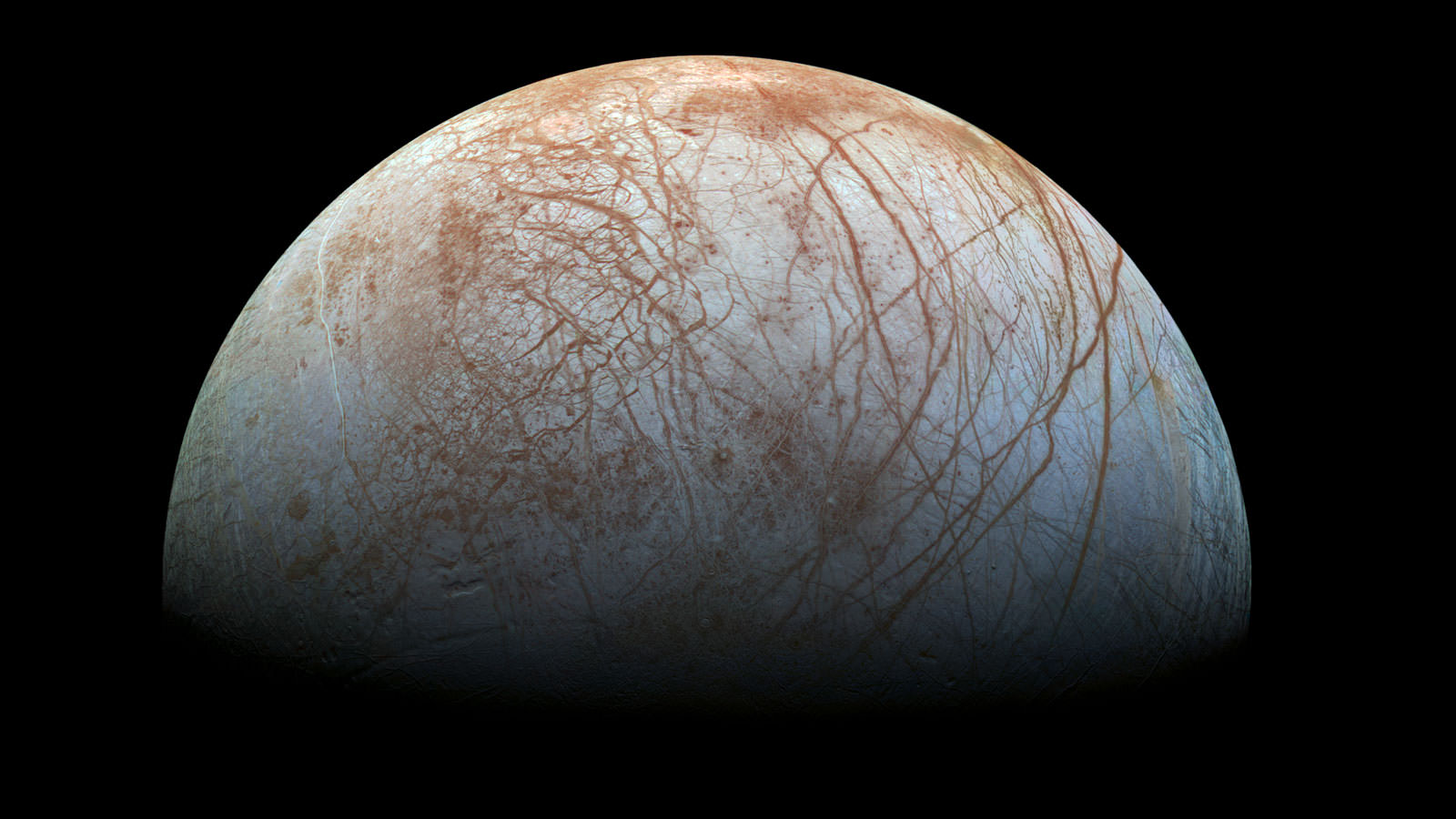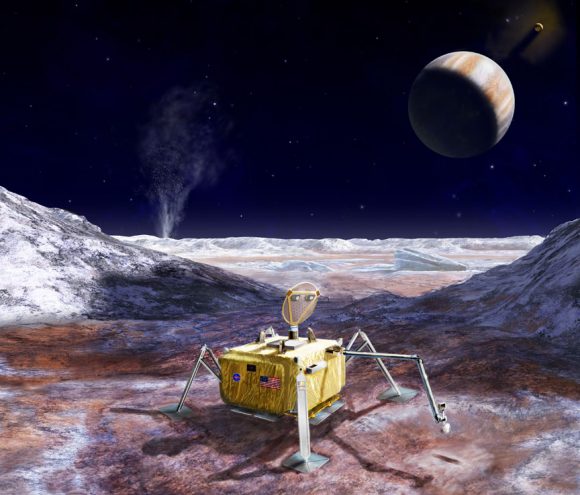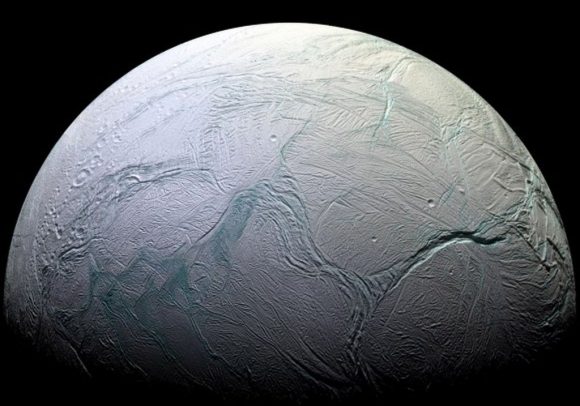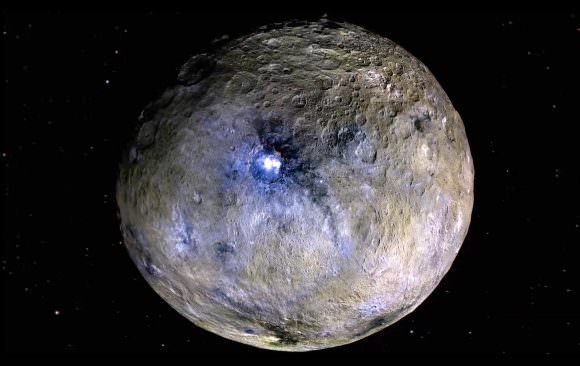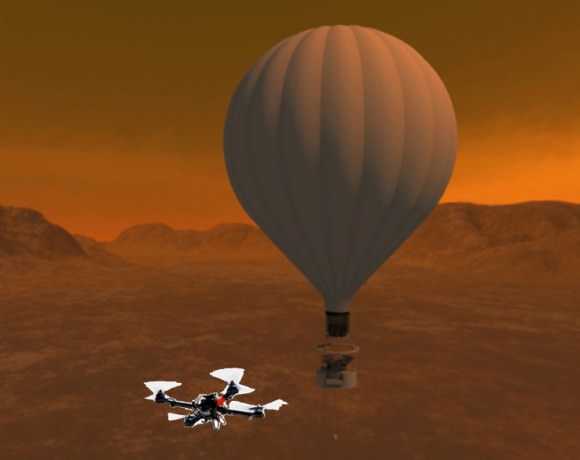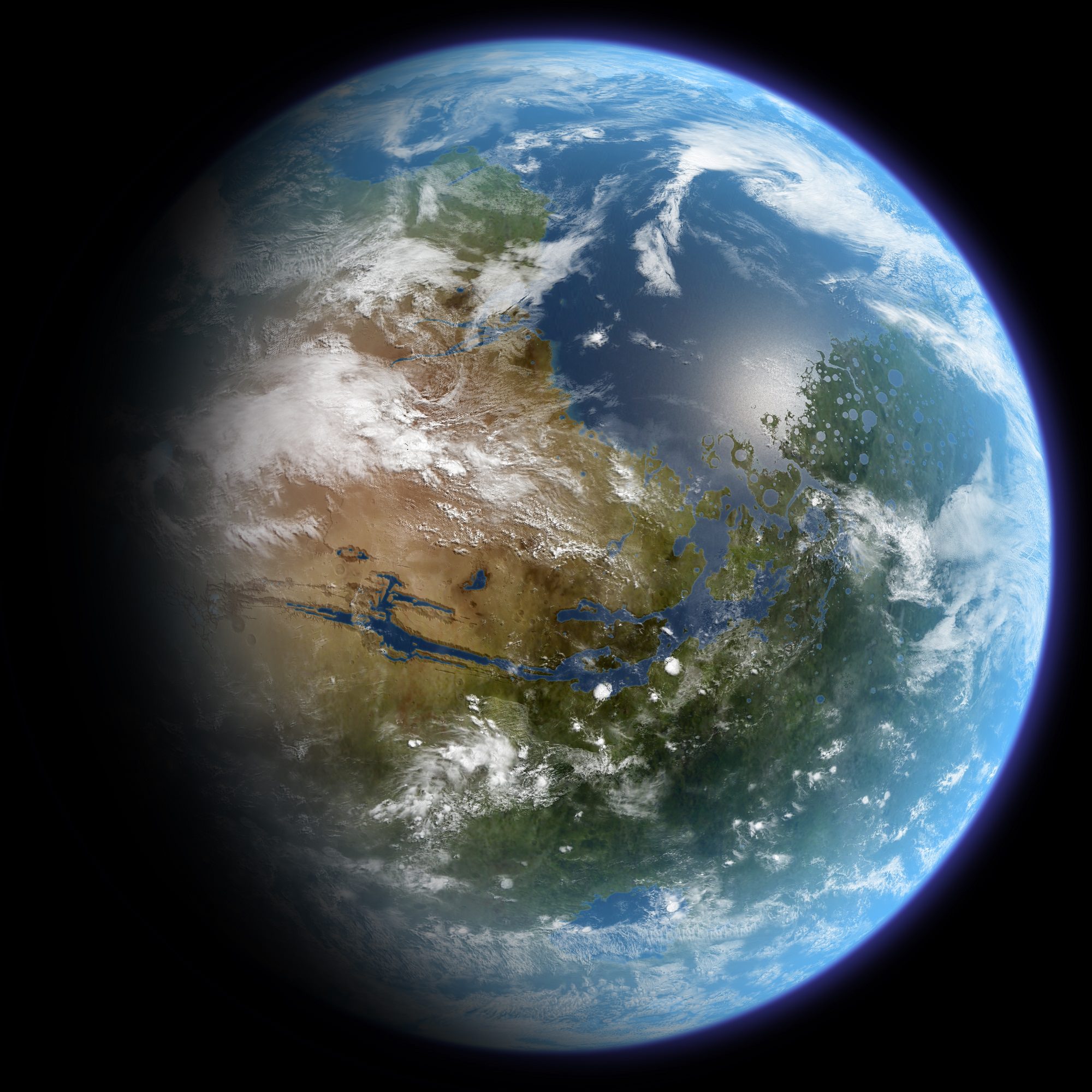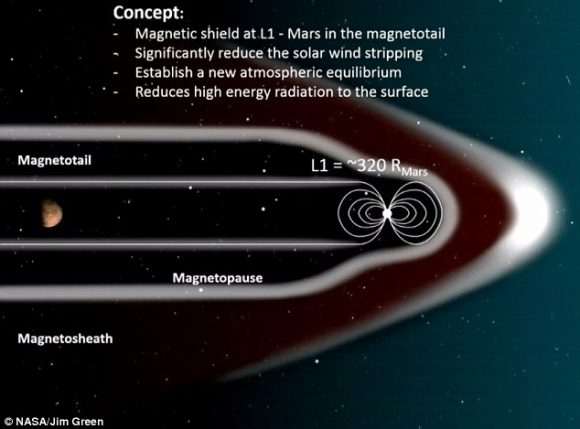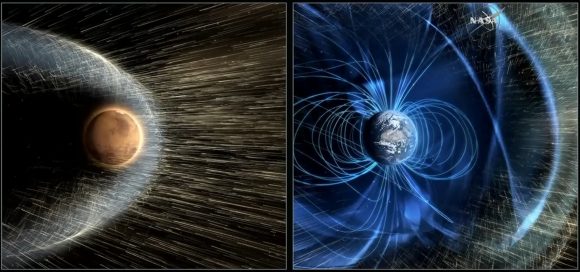The idea of terraforming Mars – aka “Earth’s Twin” – is a fascinating idea. Between melting the polar ice caps, slowly creating an atmosphere, and then engineering the environment to have foliage, rivers, and standing bodies of water, there’s enough there to inspire just about anyone! But just how long would such an endeavor take, what would it cost us, and is it really an effective use of our time and energy?
Such were the questions dealt with by two papers presented at NASA’s “Planetary Science Vision 2050 Workshop” last week (Mon. Feb. 27th – Wed. Mar. 1st). The first, titled “The Terraforming Timeline“, presents an abstract plan for turning the Red Planet into something green and habitable. The second, titled “Mars Terraforming – the Wrong Way“, rejects the idea of terraforming altogether and presents an alternative.
The former paper was produced by Aaron Berliner from the University of California, Berkeley, and Chris McKay from the Space Sciences Division at NASA Ames Research Center. In their paper, the two researchers present a timeline for the terraforming of Mars that includes a Warming Phase and an Oxygenation Phase, as well as all the necessary steps that would precede and follow.

As they state in their paper’s Introduction:
“Terraforming Mars can be divided into two phases. The first phase is warming the planet from the present average surface temperature of -60° C to a value close to Earth’s average temperature to +15° C, and recreating a thick CO² atmosphere. This warming phase is relatively easy and quick, and could take ~100 years. The second phase is producing levels of O² in the atmosphere that would allow humans and other large mammals to breath normally. This oxygenation phase is relatively difficult and would take 100,000 years or more, unless one postulates a technological breakthrough.”
Before these can begin, Berliner and McKay acknowledge that certain “pre-terraforming” steps need to be taken. These include investigating Mars’ environment to determine the levels of water on the surface, the level of carbon dioxide in the atmosphere and in ice form in the polar regions, and the amount of nitrates in Martian soil. As they explain, all of these are key to the practicality of making a biosphere on Mars.
So far, the available evidence points towards all three elements existing in abundance on Mars. While most of Mars water is currently in the form of ice in the polar regions and polar caps, there is enough there to support a water cycle – complete with clouds, rain, rivers and lakes. Meanwhile, some estimates claim that there is enough CO² in ice form in the polar regions to create an atmosphere equal to the sea level pressure on Earth.
Nitrogen is also a fundamental requirement for life and necessary constituent of a breathable atmosphere, and recent data by the Curiosity Rover indicate that nitrates account for ~0.03% by mass of the soil on Mars, which is encouraging for terraforming. On top of that, scientists will need to tackle certain ethical questions related to how terraforming could impact Mars.

For instance, if there is currently any life on Mars (or life that could be revived), this would present an undeniable ethical dilemma for human colonists – especially if this life is related to life on Earth. As they explain:
“If Martian life is related to Earth life – possibly due to meteorite exchange – then the situation is familiar, and issues of what other types of Earth life to introduce and when must be addressed. However, if Martian life in unrelated to Earth life and clearly represents a second genesis of life, then significant technical and ethical issues are raised.”
To break Phase One – “The Warming Phase” – down succinctly, the authors address an issue familiar to us today. Essentially, we are altering our own climate here on Earth by introducing CO² and “super greenhouse gases” to the atmosphere, which is increasing Earth’s average temperature at a rate of many degrees centigrade per century. And whereas this has been unintentional on Earth, on Mars it could be re-purposed to deliberately warm the environment.
“The timescale for warming Mars after a focused effort of super greenhouse gas production is short, only 100 years or so,” they claim. “If all the solar incident on Mars were to be captured with 100% efficiency, then Mars would warm to Earth-like temperatures in about 10 years. However, the efficiency of the greenhouse effect is plausibly about 10%, thus the time it would take to warm Mars would be ~100 years.”

Once this thick atmosphere has been created, the next step involves converting it into something breathable for humans – where O² levels would be the equivalent of about 13% of sea level air pressure here on Earth and CO² levels would be less than 1%. This phase, known as the “Oxygenation Phase”, would take considerably longer. Once again, they turn towards a terrestrial example to show how such a process could work.
Here on Earth, they claim, the high levels of oxygen gas (O²) and low levels of CO² are due to photosynthesis. These reactions rely on the sun’s energy to convert water and carbon dioxide into biomass – which is represented by the equation H²O + CO² = CH²O + O². As they illustrate, this process would take between 100,000 and 170,000 years:
“If all the sunlight incident on Mars was harnessed with 100% efficiency to perform this chemical transformation it would take only 17 years to produce high levels of O². However, the likely efficiency of any process that can transform H²O and CO² into biomass and O² is much less than 100%. The only example we have of a process that can globally alter the CO² and O² of an entire plant is global biology. On Earth the efficiency of the global biosphere in using sunlight to produced biomass and O2 is 0.01%. Thus the timescale for producing an O² rich atmosphere on Mars is 10,000 x 17 years, or ~ 170,000 years.”
However, they make allowances for synthetic biology and other biotechnologies, which they claim could increase the efficiency and reduce the timescale to a solid 100,000 years. In addition, if human beings could utilize natural photosynthesis (which has a comparatively high efficiency of 5%) over the entire planet – i.e. planting foliage all over Mars – then the timescale could be reduced to even a few centuries.
Finally, they outline the steps that need to be taken to get the ball rolling. These steps include adapting current and future robotic missions to assess Martian resources, mathematical and computer models that could examine the processes involved, an initiative to create synthetic organisms for Mars, a means to test terraforming techniques in a limited environment, and a planetary agreement that would establish restrictions and protections.
Quoting Kim Stanley Robinson, author of the Red Mars Trilogy, (the seminal work of science fiction about terraforming Mars) they issue a call to action. Addressing how long the process of terraforming Mars will take, they assert that we “might as well start now”.
To this, Valeriy Yakovlev – an astrophysicist and hydrogeologist from Laboratory of Water Quality in Kharkov, Ukraine – offers a dissenting view. In his paper, “Mars Terraforming – the Wrong Way“, he makes the case for the creation of space biospheres in Low Earth Orbit that would rely on artificial gravity (like an O’Neill Cylinder) to allow humans to grow accustomed to life in space.
Looking to one of the biggest challenges of space colonization, Yakovlev points to how life on bodies like the Moon or Mars could be dangerous for human settlers. In addition to being vulnerable to solar and cosmic radiation, colonists would have to deal with substantially lower gravity. In the case of the Moon, this would be roughly 0.165 times that which humans experience here on Earth (aka. 1 g), whereas on Mars it would be roughly 0.376 times.

The long-term effects of this are not known, but it is clear it would include muscle degeneration and bone loss. Looking farther, it is entirely unclear what the effects would be for those children who were born in either environment. Addressing the ways in which these could be mitigated (which include medicine and centrifuges), Yakovlev points out how they would most likely be ineffective:
“The hope for the medicine development will not cancel the physical degradation of the muscles, bones and the whole organism. The rehabilitation in centrifuges is less expedient solution compared with the ship-biosphere where it is possible to provide a substantially constant imitation of the normal gravity and the protection complex from any harmful influences of the space environment. If the path of space exploration is to create a colony on Mars and furthermore the subsequent attempts to terraform the planet, it will lead to the unjustified loss of time and money and increase the known risks of human civilization.”
In addition, he points to the challenges of creating the ideal environment for individuals living in space. Beyond simply creating better vehicles and developing the means to procure the necessary resources, there is also the need to create the ideal space environment for families. Essentially, this requires the development of housing that is optimal in terms of size, stability, and comfort.
In light of this, Yakolev presents what he considers to be the most likely prospects for humanity’s exit to space between now and 2030. This will include the creation of the first space biospheres with artificial gravity, which will lead to key developments in terms of materials technology, life support-systems, and the robotic systems and infrastructure needed to install and service habitats in Low Earth Orbit (LEO).

These habitats could be serviced thanks to the creation of robotic spacecraft that could harvest resources from nearby bodies – such as the Moon and Near-Earth Objects (NEOs). This concept would not only remove the need for planetary protections – i.e. worries about contaminating Mars’ biosphere (assuming the presence of bacterial life), it would also allow human beings to become accustomed to space more gradually.
As Yakovlev told Universe Today via email, the advantages to space habitats can be broken down into four points:
“1. This is a universal way of mastering the infinite spaces of the Cosmos, both in the Solar System and outside it. We do not need surfaces for installing houses, but resources that robots will deliver from planets and satellites. 2. The possibility of creating a habitat as close as possible to the earth’s cradle allows one to escape from the inevitable physical degradation under a different gravity. It is easier to create a protective magnetic field.
“3. The transfer between worlds and sources of resources will not be a dangerous expedition, but a normal life. Is it good for sailors without their families? 4. The probability of death or degradation of mankind as a result of the global catastrophe is significantly reduced, as the colonization of the planets includes reconnaissance, delivery of goods, shuttle transport of people – and this is much longer than the construction of the biosphere in the Moon’s orbit. Dr. Stephen William Hawking is right, a person does not have much time.”
And with space habitats in place, some very crucial research could begin, including medical and biologic research which would involve the first children born in space. It would also facilitate the development of reliable space shuttles and resource extraction technologies, which will come in handy for the settlement of other bodies – like the Moon, Mars, and even exoplanets.
Ultimately, Yakolev thinks that space biospheres could also be accomplished within a reasonable timeframe – i.e. between 2030 and 2050 – which is simply not possible with terraforming. Citing the growing presence and power of the commercial space sector, Yakolev also believed a lot of the infrastructure that is necessary is already in place (or under development).
“After we overcome the inertia of thinking +20 years, the experimental biosphere (like the settlement in Antarctica with watches), in 50 years the first generation of children born in the Cosmos will grow and the Earth will decrease, because it will enter the legends as a whole… As a result, terraforming will be canceled. And the subsequent conference will open the way for real exploration of the Cosmos. I’m proud to be on the same planet as Elon Reeve Musk. His missiles will be useful to lift designs for the first biosphere from the lunar factories. This is a close and direct way to conquer the Cosmos.”
With NASA scientists and entrepreneurs like Elon Musk and Bas Landorp looking to colonize Mars in the near future, and other commercial aerospace companies developing LEO, the size and shape of humanity’s future in space is difficult to predict. Perhaps we will jointly decide on a path that takes us to the Moon, Mars, and beyond. Perhaps we will see our best efforts directed into near-Earth space.
Or perhaps we will see ourselves going off in multiple directions at once. Whereas some groups will advocate creating space habitats in LEO (and later, elsewhere in the Solar System) that rely on artificial gravity and robotic spaceships mining asteroids for materials, others will focus on establishing outposts on planetary bodies, with the goal of turning them into “new Earths”.
Between them, we can expect that humans will begin developing a degree of “space expertise” in this century, which will certainly come in handy when we start pushing the boundaries of exploration and colonization even further!


